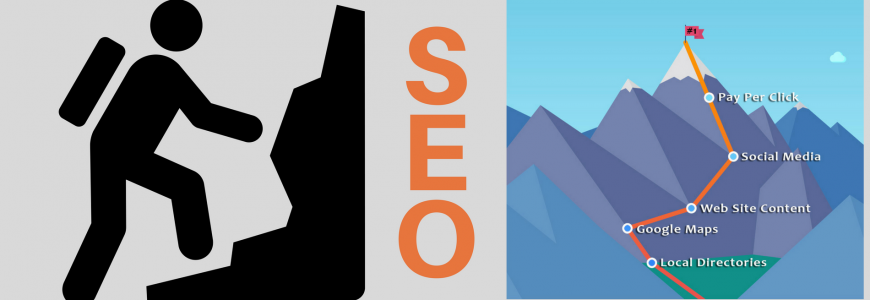Does SEO really take as long as all the marketing specialists say? A good number of people are out there promising much faster results, so there must be a loophole the marketers aren’t telling you, right?
We wish we had better news for you. However, the reality is that achieving a strong presence on Google and the rest of the web requires time, effort, and patience. Anyone who promises you instant results is just trying to sell you snake oil. Keep reading to find out why SEO takes time, contrary to what certain salespeople say.
Think of SEO Like Getting in Shape
When you do it right, SEO takes time. It’s a long, ongoing process. You’ll see gradual results bit by bit as your web presence grows stronger until finally, one day, you realize you’re getting tons of website traffic, Facebook likes, and customer calls and emails.
In this way, SEO is just like anything else in life that requires an investment of time and effort. For example, when you want to lose weight and get in shape long-term, you know you have to eat right and exercise over a period of several months. “Magic” diet pills and cleanses may promise overnight results, but they very rarely deliver. And if they do, the results certainly don’t last, and they don’t make you any healthier.
The same is true when optimizing your web presence: If you want vital, long-lasting results, you have to put in the time and effort for a minimum of 90 days. Any shady service promising you a silver bullet or page-1 rankings overnight isn’t going to help your business grow in a meaningful way.
After all, SEO is a means to an end—in other words, getting the top position for one of your services isn’t actually the end goal. Rather, as a small business, you’re embarking on an SEO campaign because you ultimately want to attract new customers and build your brand. So, in the same way that number on the scale doesn’t reflect your overall health, neither does your Google ranking for one search term reflect how well you’re appealing to local customers.
For increased visibility and an effective web presence, you need to think long-term.
Building a Web Presence Is a Slow Climb
…But the views from the top are worth it!

The graphic above illustrates the multiple steps involved in launching an SEO campaign and building your web presence from the ground up.
The Essentials
First, you should start small with local directories. You must represent your business’s information accurately on a variety of quality, credible directories. Doing so lends your business some authenticity in Google’s eyes.
Next, you create a Google My Business account and create a Google Maps listing. This is a requirement in order to appear in local searches on Google.
Then, you supplement your online listings with an attractive website and valuable, high-quality on-page content. This is how search engines learn the different types of services and/or products you offer. Essentially, it helps Google put your business into context so it can better represent you in search results. Plus, having plenty of well-written website content makes your business easier to find by voice search.
Once you’ve established your online credibility and have a website that draws visitors in, you can put your business on all of the major social media platforms (namely Facebook, Twitter, Instagram, and Google+). Doing so will further cement your authenticity for Google. Moreover, social media is yet another vehicle with which you can reach your local customers.
At this point, you could end your efforts and wait for your online visibility to ramp up. We typically advise our clients to give their campaigns at least 90 days to reach full strength. However, this waiting period can vary depending on how crowded your local market is. For example, if you’re located in a densely populated metro area like New York, Dallas, or Miami, you’ll have a lot of competition, and your campaign may take longer to rise to the top. Conversely, if you’re located in a sparsely populated area with few competitors, your campaign may take off sooner.
Paid Ads
However, if you really want to take your web presence as high as it can go, you can add a paid advertising campaign, too. Generally, you should try paid advertising, particularly pay-per-click (PPC), after you’ve completed all of the previous steps. This is for two reasons: 1) You’ll be able to keep costs down once your credibility has been established with SEO; 2) You will have a better chance at turning clicks into leads if the webpage your ad links to is attractive, informative, and persuasive.
At the same time, there are a few, highly specific situations in which PPC will be more effective than SEO for your immediate, short-term goals. These are situations in which demand is super high for a short period of time. For example, if you offer roof repair services and a major storm recently left a lot of people with damaged roofs, you’ll want to capitalize on this urgent demand and run PPC ads ASAP. Considering your customers will be highly motivated at the jump, your lack of depth on the web won’t be as much of a factor. Please keep in mind, though, that this kind of scenario is a rare exception to the rule. Generally speaking, you really ought to develop your web presence before running a PPC campaign.
Be Patient and Persistent
With enough time—and occasional tweaking, if necessary—your web presence will grow and expand. It’s inevitable. We speak for all SEO practitioners when we ask you to remain patient and trust the process. We know it’s difficult to wait, especially when you’ve made a financial investment in your campaign, but time is truly the most important factor when it comes to building a web presence. So, whatever you do, don’t fall for any snake oil that claims otherwise. SEO takes time, period.
Good luck!



